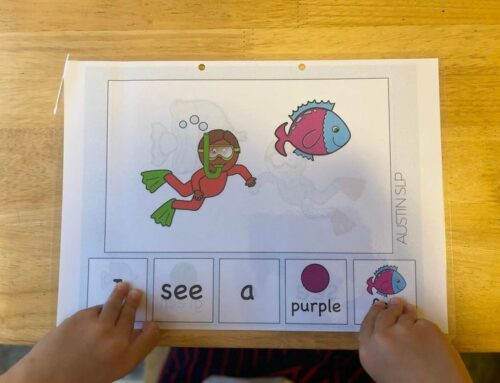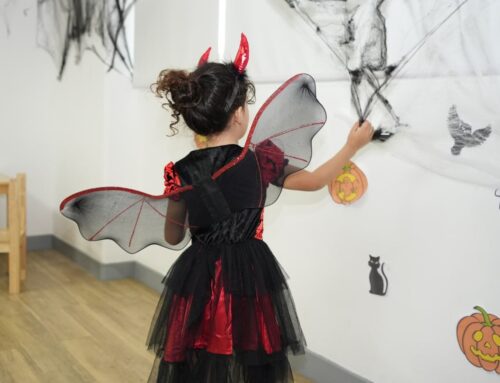At OrbRom Center in Phnom Penh, we believe that speech and language development doesn’t have to happen only inside a therapy room. Everyday items found in your home can become powerful learning tools. Using simple objects in fun, interactive ways helps children practice vocabulary, sentence building, listening, and social communication skills—all while keeping things natural and enjoyable.
If you’re a parent in Cambodia looking to support your child’s communication growth, here are practical ways to turn household items into meaningful speech therapy opportunities.
1. Kitchen Tools: A Hub for Language and Learning
Your kitchen is one of the best places to nurture communication. Everyday items like spoons, bowls, fruits, and cups can be used for speech and language practice.
Speech and language ideas:
-
Naming and describing: Ask your child to name ingredients or describe how they look, feel, and smell. (“The apple is red and round.”)
-
Sequencing: Talk through steps in preparing simple snacks: “First we wash, then we cut, then we eat!”
-
Following directions: Give two-step instructions like “Get the spoon and stir the bowl.”
-
Comparing: Encourage comparisons like “The banana is longer than the orange.”
Cooking together strengthens vocabulary, sequencing, and comprehension—skills that speech therapy often targets. For more at-home tips, visit our Speech Therapy page and discover how our therapists design fun, daily routines for language growth.
2. Mirrors: Encouraging Speech Sound Awareness
A simple mirror can be a child’s best speech therapy partner. It helps children observe how their mouth, tongue, and lips move when producing sounds.
Try this:
-
Have your child watch themselves as they say words or practice specific sounds like /p/, /b/, or /m/.
-
Turn it into a game—make silly faces, practice blowing, or imitate expressions to strengthen oral motor control.
-
Pair the mirror with pretend play, such as “getting ready for school,” to work on conversation and role-play.
At OrbRom Center, our speech-language pathologists use mirrors and other visual tools to teach articulation and sound placement. Learn more about our Speech-Language Services designed to help children express themselves clearly and confidently.
3. Toys and Everyday Play Items
Blocks, toy cars, dolls, or even bottle caps can promote speech and language development. You don’t need expensive toys—creativity is the key.
How to use them:
-
Building with blocks: Encourage storytelling (“Let’s build a house for the cat!”) or give directions (“Put the blue block on top”).
-
Pretend play: Use dolls or action figures to practice dialogue, emotions, and everyday routines (“She’s brushing her teeth!”).
-
Sorting games: Ask your child to sort items by color, shape, or size while naming them aloud.
Play-based therapy is one of the most effective ways for children to learn. Explore how our therapists use play and creativity in Play-Based Speech Therapy to build strong communication foundations.
4. Books and Storytelling
Reading aloud is one of the most powerful tools for developing language skills. Even if you don’t have a library of books, you can use magazines, menus, or photo albums.
Language tips while reading:
-
Pause to ask open-ended questions: “What do you think happens next?”
-
Point out and name pictures: “That’s a dog! What sound does the dog make?”
-
Re-tell the story together to boost memory and sentence structure.
If you’re not sure how to start, our guide on Using Storybooks and Visuals in Speech Therapy offers step-by-step strategies that parents in Cambodia can apply at home.
5. Laundry Time, Bath Time, and Daily Routines
Daily routines like washing clothes, brushing teeth, or taking a bath offer natural chances for communication.
Examples:
-
During laundry: Sort clothes by color and name each item—“This is Daddy’s shirt, this is your red sock!”
-
During bath time: Talk about actions (“Pour, splash, scrub”) and body parts (“Wash your toes!”).
-
During dressing: Ask choices like “Do you want the blue shirt or the green shirt?”
By turning daily chores into interactive conversations, you’re strengthening vocabulary, comprehension, and social turn-taking. You can read more about practical communication strategies in How Speech Therapy Supports Daily Routines.
6. Containers, Boxes, and Household Objects
Old boxes, cups, or containers can be used for fun speech games:
-
Hide objects inside and play “What’s in the box?” to encourage guessing and describing.
-
Use containers for sorting items by categories (“All the fruits go here, the animals go there”).
-
Create sound shakers using rice or beans to explore listening and rhythm skills.
These hands-on activities not only support speech but also build fine motor coordination and sensory engagement—areas often targeted in our Occupational Therapy programs.
Conclusion
You don’t need special equipment to help your child develop speech and language skills. The most valuable tools are already in your home—and your willingness to talk, play, and connect with your child every day.
At OrbRom Center, we help families in Phnom Penh transform ordinary routines into rich communication experiences. Whether through kitchen play, storytelling, or simple games, consistent engagement makes all the difference in your child’s speech and language journey.
We are the only Preschool specialized on children with special needs in PhnomPenh.
- Internationally qualified teachers
- Cambodia’s largest sensory room
- Outdoor swimming pool
- Covered outdoor playground
📞 Phone: 077.455.993
Telegram Link: https://t.me/OrbRom






Leave A Comment